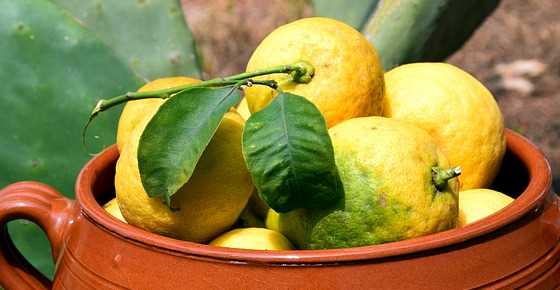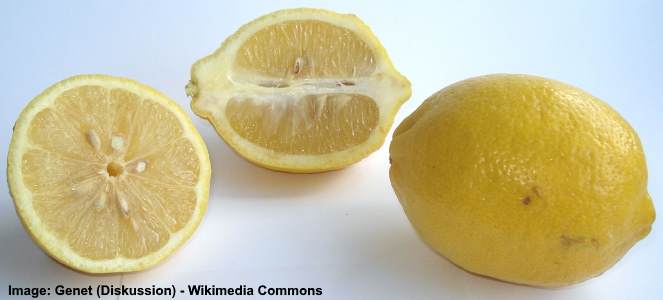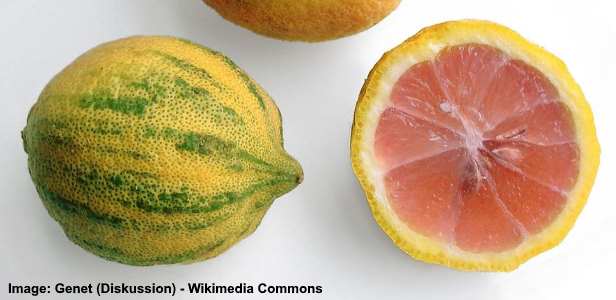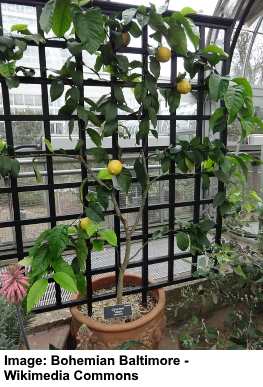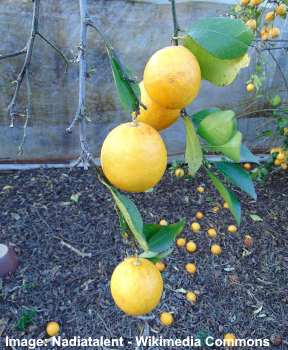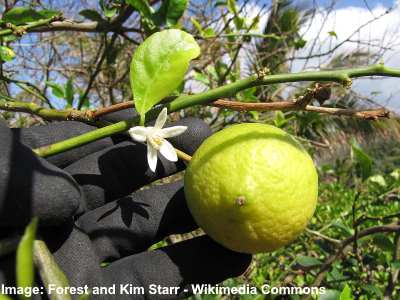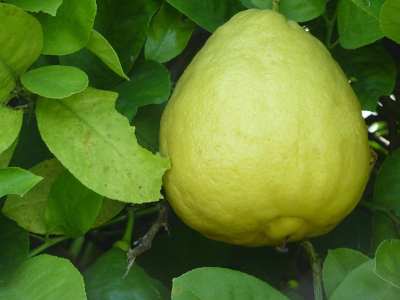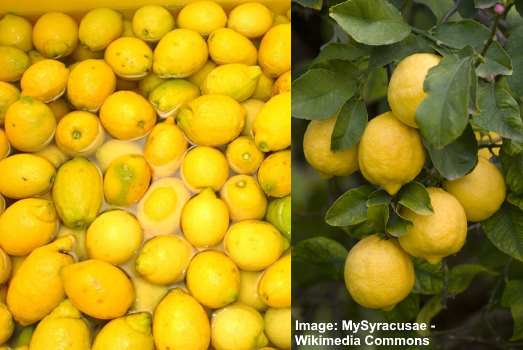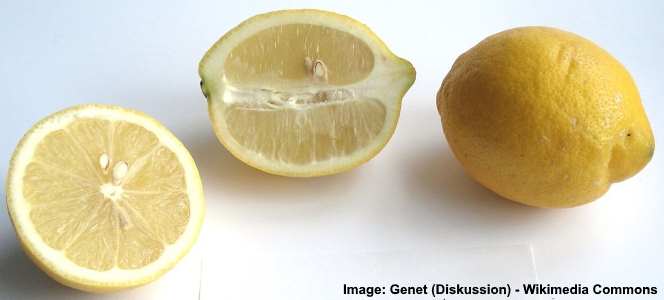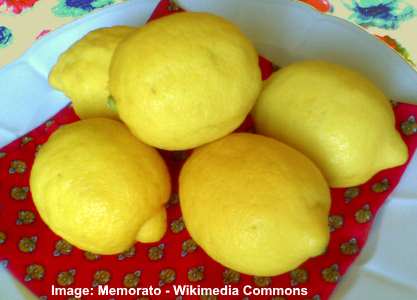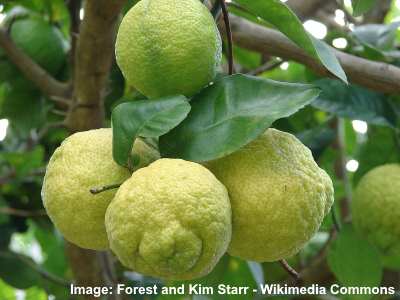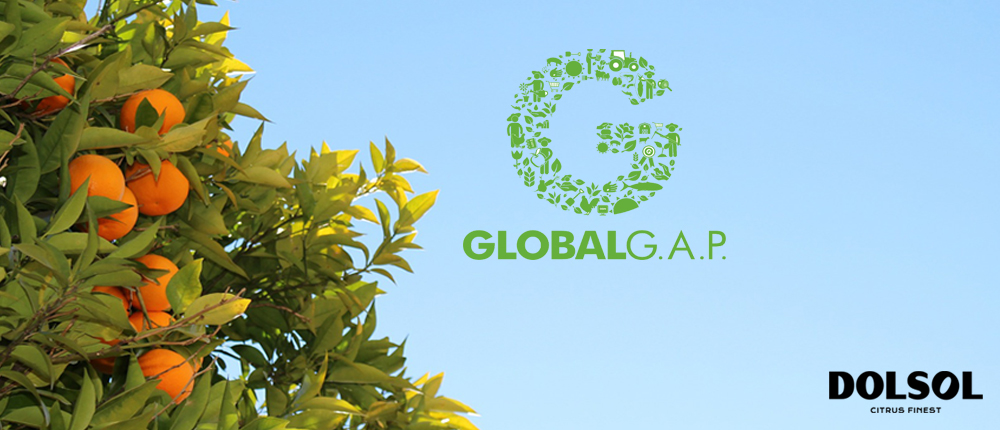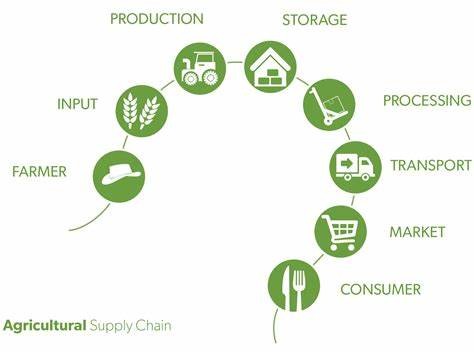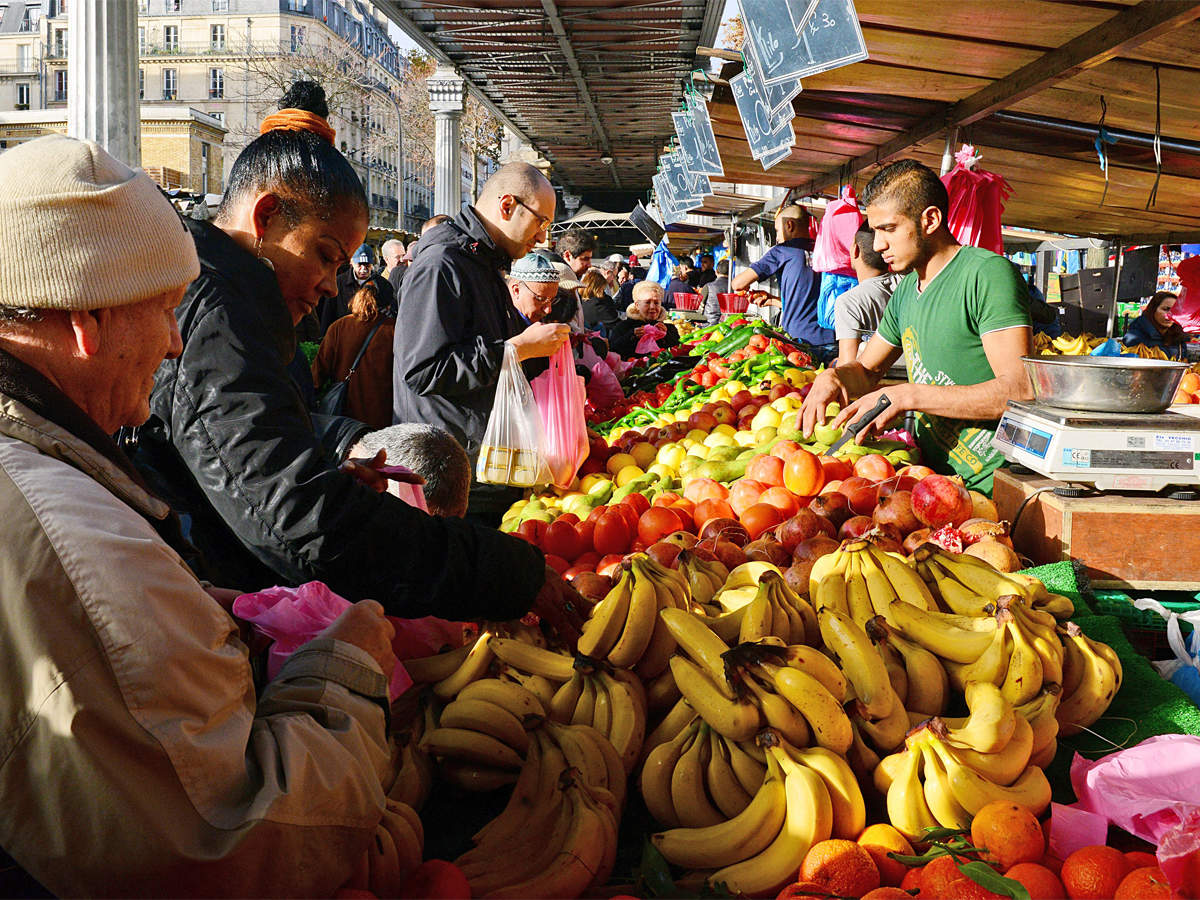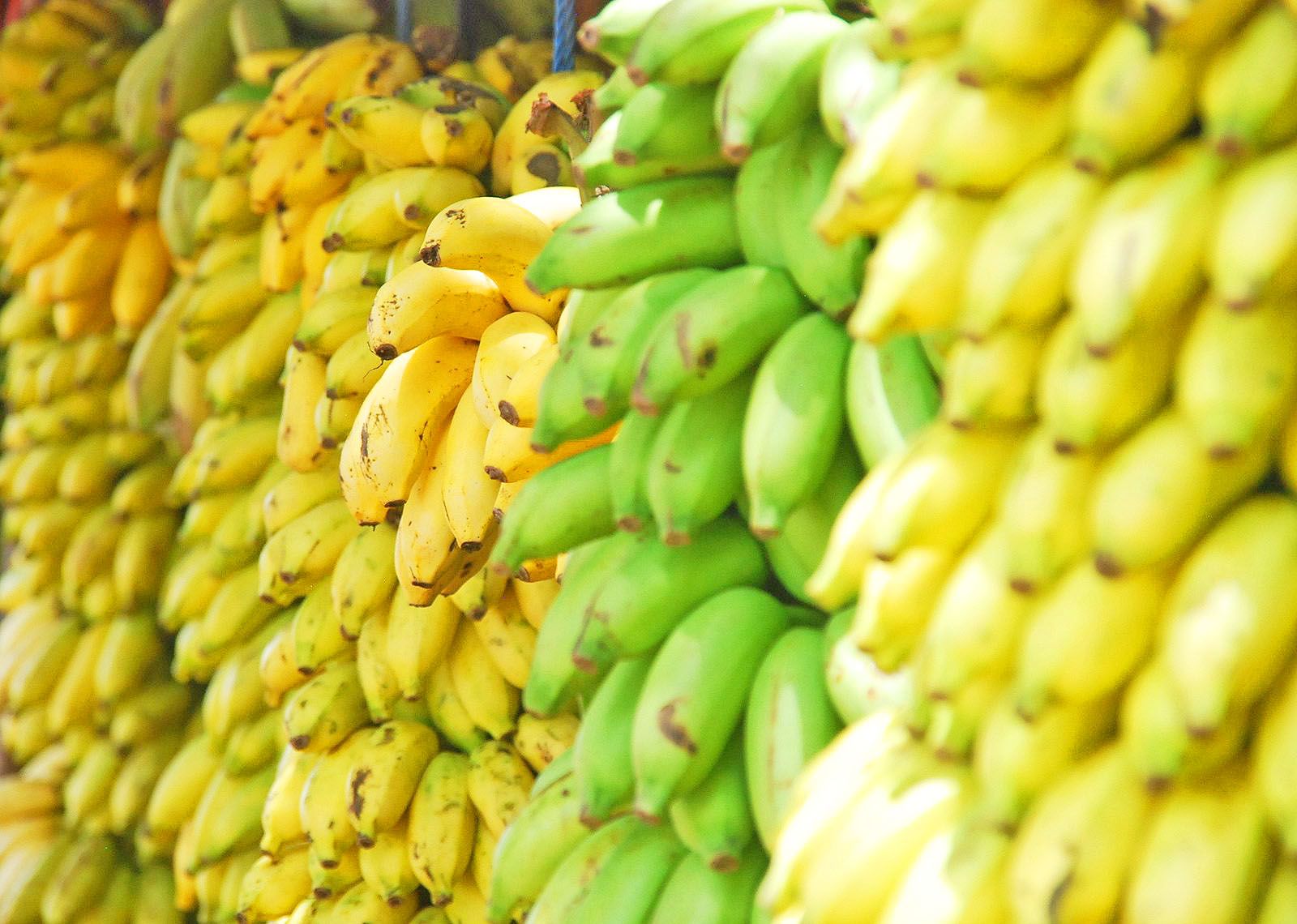The botanical name for lemon species is Citrus limon. Thought to have originated in South Asia, lemons are now a popular citrus fruit used all over the world. Lemon juice is also a rich source of vitamin C and the yellow peel contains lemon oil used to make essential oil.
Some of the most popular types of true lemons are Lisbon lemons and Eureka lemons. Although the majority of lemons have yellow juicy flesh, some types of lemons have pink flesh and are referred to as pink lemons.
In this article, you will learn about different varieties of lemons. From big lemons such as varieties that grow in India to smaller hybrid lemons such as the Meyer variety.
Types of Lemons (With Pictures and Names)
Let’s look in more detail at the different characteristics of some of the most commonly consumed lemons in the world.
Eureka Lemons
Eureka lemons (Citrus limon ‘Eureka’) are one of the most popular kinds of lemon sold in stores. Originating from California, Eureka lemons also grow in Australia, Israel, Argentina, and South Africa. They are also a popular type of lemon to grow in your garden if you live in warm climates.
The lemon tree producing Eureka lemons is one of the thorn-less varieties and produces lemons all year round.
This variety of lemon is classed as a “true” lemon and has a vibrant yellow rough skin that is medium-thin. The lemon is oblong shaped with a protruding nipple (called a mammilla) at the end.
Eureka lemons have an acidic taste and not as sweet as some other types of lemons. Under the soft rind is juicy segmented lemon pulp. This lemon variety is a good type of lemon to use for its juice and the abundant oils in the zest.
Popular varieties of Eureka lemons include Cascade, Allen, Ross and Taylor, and Corona Foothill.
Eureka lemon trees thrive in warm and hot climates and don’t withstand the cold well. Recommended hardiness zones are USDA 9-10.
Pink lemons: A type of Eureka lemon
One type of Eureka lemon is the variegated pink lemon. This Eureka variety of lemon has a green-striped rind and pink flesh. This is the type of lemon you can use to make pink lemonade.
Pink Eureka lemons originated in California and are one of the most unique lemons you will come across.
Lisbon Lemons
Another type of true lemon, the Lisbon lemon (Citrus limon ‘Lisbon’) looks similar to the Eureka lemon with its slightly pitted skin and oblong shape.
Lisbon lemons are not in the class of sweet lemons as they have a very acidic taste. The skin is medium-thick and is a good source of lemon oil and vitamin C. The juicy lemon flesh is generally seedless and produces a lot of juice.
Compared to the Eureka lemon, the Lisbon lemon survives well in cooler climates. Unlike the Eureka lemon that produces fruit all year long, the Lisbon lemon tree produces lemons just twice a year.
Some people may refer to both Eureka lemons and Lisbon lemons as “Sunkist” lemons as these are the most common lemon varieties and it’s hard to distinguish between them.
Lisbon lemons are fairly easy to grow at home in your garden or in containers. The recommended USDA hardiness zone is 9-10. They need full sun during growing seasons and protection from frost.
Meyer Lemons
Meyer lemons (Citrus × meyeri) are one of the most popular varieties of lemons in the world. They originally come from China and now grow in many countries, especially the USA.
They are a type of sweet lemon that have a rounder plump shape than Eureka or Lisbon lemons. The flesh of these varieties of lemons is juicy which is covered by thin bright yellow skin.
Actually, Meyer lemons are not a true type of lemon, but a hybrid of citron and mandarin or orange. This gives Meyer lemons a sweeter taste that Eureka lemons or Lisbon lemons. Compared to other kinds of lemons, Meyer lemons have yellowish-orange flesh.
One of the differences between Meyer lemons and Eureka lemons is the fact that the Meyer variety is more cold-hardy. Also, Meyer lemon trees are somewhat smaller than Eureka lemon trees.
Meyer lemons have a sweeter taste than regular lemons.
Meyer lemon trees are small bush trees which grow well in containers or in gardens. One of the good things about growing Meyer lemons is that they are a hardy type of lemon tree. They grow well in USDA hardiness zones 8-11.
‘Lemonade’ Lemons
This type of lemon – citrus limon x reticulata, or ‘Lemonade’ lemon – is not a true type of lemon but a cross between a lemon tree and a mandarin tree that was developed in Australia.
This variety of lemon is very juicy and has a strong scent. This sweeter type of lemon has a lemony flavor and it doesn’t have the strong sourness of most other lemons.
The ‘Lemonade’ tree grows up to 2.5 m and produces a lot of fruits, but it’s also available as a compact dwarf fruit tree. It grows in USDA hardiness zones 8-10 and requires sunny spot with good drainage.
Bearss Lemons
Bearss lemons (citrus x Latifolia) are a true lemon variety with an oblong shape and protruding nipple similar to the Lisbon lemons.
According to some sources, Bearss lemons are a type of Sicilian lemon. However, they also grow in Brazil and Florida.
This Florida variety of lemon is very popular due to its abundant flesh and relatively thin skin. Despite the lightly-pitted skin being thinner than some varieties of lemon, it is still packed with lemon oil. Bearss lemon trees produce an abundant harvest of high-quality lemons.
“Bearss” is also a variety of another citrus fruit – limes. This is one of the most popular types of lime that you can buy.
Ponderosa Lemons
The Ponderosa lemon (Citrus x pyriformis) is a large lemon cultivar that is a hybrid of citron and pomelo fruits.
One of the distinguishing features of ponderosa lemons is their thick bumpy rind. The flesh of this large lemon variety is acidic and juicy. In fact, some reports suggest that the juice from one ponderosa lemon is enough to bake several lemon pies.
The Ponderosa lemon tree is mostly grown as an ornamental fruit-producing lemon tree. As the lemon trees are susceptible to frost, you can also grow the tree in containers to take them inside during cold winters.
Femminello Ovale Lemons
Femminello Ovale lemons (Citrus × limon ‘Femminello’) are a variety of lemon that comes from Italy. In fact, ‘Femminello’ cultivars are the most popular kinds of lemons that grow in Italy.
Lemons from the Femminello lemon trees have an oval shape with a rounded bottom. The medium-thick yellow rind is moderately smooth and finely pitted. Compared to some US varieties of lemons, Femminello Ovale lemons have a much tarter taste.
Femminello lemons are also a larger variety of lemon when compared to different kinds of lemons such as Eureka and Lisbon.
Other types of Fimminello lemons are Santa Teresa lemons, Sorrento lemons, and Siracusa lemons.
Siracusa Lemon
Siracusa lemons are the second most important type of lemons from the Femminello cultivars. Femminello Ovale is the most important Italian variety.
The Siracusa lemon tree produces a large yield of lemon fruits. These brightly-colored lemons are prized for their abundance of lemon juice and high-quality essential oils from their peel.
Verna Lemons
The Verna lemon (Citrus × limon ‘Verna’) is a Spanish variety of lemon that has a small round shape with bright yellow smooth rind. Verna lemons are also called Berna lemons. This type of lemon is actually a very large lemon variety, however the lemon fruits are harvested in their immature state before they grow too large.
These lemon trees produce good-sized lemon fruits that are quite juicy and acidic. Depending on the type of growing season, the pulp may have few seeds or there may be many seeds. A noticeable feature of Verna lemons is their tender flesh.
Genoa Lemons
Genoa lemons (Citrus × limon ‘Genoa’) originally come from Italy but are a popular type of lemon that grows in California.
This type of lemon looks very similar to the popular Eureka variety of lemons. They have an oblong shape with a protruding end at the bottom. Just like the Eureka type of lemon, the flesh is juicy and acidic and is covered by a thin rind.
Genoa lemon tree (also called Genova lemons) is a small bushy type of fruit tree that grows many thorns. This can make it difficult to harvest this type of lemon. However, Genova trees are quite cold-hardy and can grow in cooler climates where other lemon trees can’t.
Volkamer Lemons
Volkamer lemons (Citrus × limon ‘Volkamer’) are not a true lemon variety but a cross between a lemon and a sour orange.
This hybrid lemon variety has a round ‘lemon’ shape with a bright reddish bumpy rind. Unlike most types of lemons, Volkamer lemons have a yellow-reddish flesh that is mainly seedless.
Because this red bumpy-skinned type of lemons was crossed with oranges, they have a sweet and less acidic taste than a regular lemon.
Primofiori Lemons
Primofiori lemons (Citrus × limon ‘Primofiori’) are a variety of Spanish lemons that have a smooth, thin rind that is bright yellow in color.
One of the reasons why Primofiori lemons have become one of the most important varieties of lemons is due to their high juice content. According to some estimates, this is the most common Spanish type of lemon.
Compared to the Berna (Verna) type of lemon, the Primofiori variety is smaller but yields more juice.
Other varieties of lemons from the Primofiori lemon tree include Fino lemons and Masero lemons.
Villafranca Lemons
Villafranca lemons (Citrus × limon ‘Villafranca’) are mid-sized lemons that are a Sicilian variety of lemon.
In many ways, Villafranca lemons are no different from Eureka lemons in terms of size and shape. The lemons grow on thorny lemon trees that are covered with dense foliage. As with most lemon varieties, Villafranca lemons are a good source of vitamin C and their rind yields plenty of lemon oil.
Villafranca lemons were the most commonly cultivated type of lemon in Florida. They now grow extensively in Israel and Argentina.
Some lemon cultivars from Villafranca lemons include ‘Galligan Lisbon’ and ‘Corona Foothill Eureka.’
Rough Lemons
Rough lemons (Citrus × jambhiri) are a medium-sized type of Indian lemon that has a rough bumpy skin.
This hybrid lemon variety is a cross between a citron and a mandarin. The bumpy-skinned lemon has a rounder shape than the traditional lemon oblong shape. The lemon fruit doesn’t have a lot of flesh and isn’t one of the juiciest lemon varieties. The rough yellow-green skin comes from its large oil glands.
Citron
Although the name “citron” is associated with lemons, it is actually a large yellow citrus fruit from India. The citron (Citrus medica) is the original citrus fruit from which all lemons have been cultivated.
Citrons have a rough rind that is much thicker than what you would expect on a regular lemon. Most varieties of citrons have light-colored acidic flesh, although some types don’t have any flesh at all. Citrons can grow to enormous sizes when compared to regular lemons. Some have been known to weigh as much as 10 lb. (5 kg)!
Persian Sweet Lemons
Persian Sweet lemons are a medium to small variety of lemons that look like Meyer lemons.
This sweet variety of lemons have a round shape with smooth skin. They have a sweet/acidic taste that resembles a sour orange. Sometimes the lemon juice can have a sour taste similar to grapefruit.
Yen Ben Lemons
Yen Ben lemons (Citrus × limon ‘Yen Ben’) are an Australian variety of lemon that looks similar to Lisbon lemons.
One of the reasons why Yen Ben lemons are so popular in the Southern Hemisphere is because of their good quality. Their thin light-yellow rind means that there is more flesh than Eureka or Lisbon varieties. Also, the lemon fruit has a high juice yield with very few seeds in it.
Unlike rough lemons or pitted Eureka lemons, the skin of Yen Ben lemons is very smooth, almost similar to Meyer varieties.
Different Types of Seedless Lemons
There are a number of lemon trees that produce seedless lemons. For example, the Seedless Lisbon variety is one of the most popular types of lemon. Other types of seedless varieties include the Californian Seedless lemon and the Australian Seedless Eureka Lemon.
 English
English 

